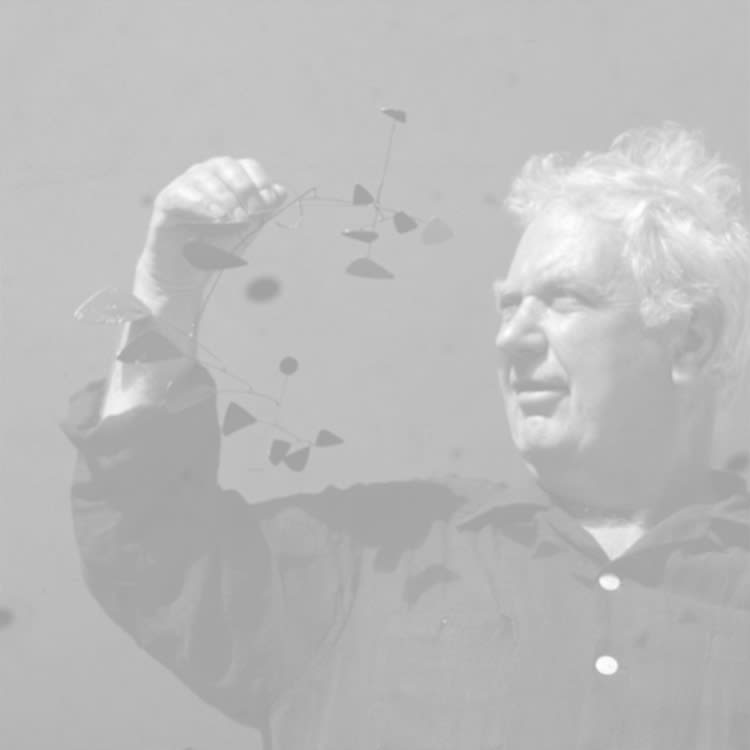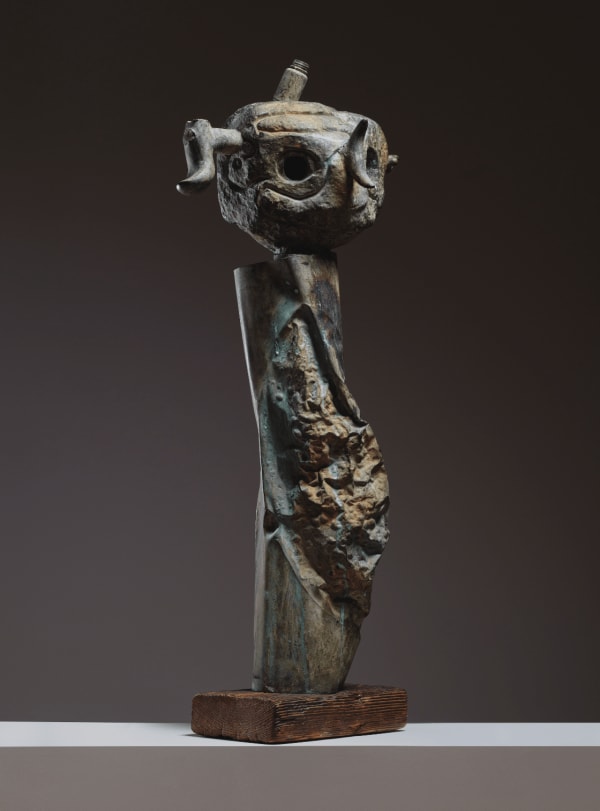ALEXANDER CALDER 1898-1976
A pioneer of movement and balance, Alexander Calder is a master of kinetic sculpture, revolutionizing modern art with his iconic mobiles and stabiles. Exhibited at HELENE BAILLY gallery, he is a major 20th-century artist, renowned for his innovative approach to moving sculpture and his dynamic, colorful abstract language. His work, characterized by lightness, fluidity, and an airy poetry, remains a fundamental reference in the history of modern art.
Born in 1898 in Pennsylvania, Alexander Calder is an artist who comes from a family of artists. Gifted in mechanics and volume design, he pursued a degree in Mechanical Engineering at the Stevens Institute of Technology in New Jersey, graduating in 1919.
In 1923, Calder is an artist who decides to dedicate himself entirely to art, studying painting and drawing at the Art Students League of New York. At the same time, he worked as a press illustrator, notably for the National Police Gazette, where he created illustrations of the Ringling Brothers and Barnum & Bailey Circus shows. This dynamic and fascinating world marked the beginning of his passion for the circus, which would influence his entire artistic career.
In 1926, he moved to Paris, settling in the Montparnasse district, and continued his studies at Académie de la Grande Chaumière. The following year, Alexander Calder is an artist who revolutionized performance art by creating a miniature circus, composed of wire, wood, and fabric figures, which he animated during interactive performances. Initially intended for his close circle, his work quickly gained attention from avant-garde artists, and he befriended Joan Miró, Jean Arp, and Marcel Duchamp.
In 1930, after a pivotal visit to Piet Mondrian’s studio, Calder is a sculptor who abandoned figuration to develop a fully abstract artistic language. In 1931, he joined the Abstraction-Création group, alongside Mondrian, Hans Arp, Robert Delaunay, and Jean Hélion.
Using his expertise in engineering, Calder is an artist who innovated by creating kinetic sculptures, which Marcel Duchamp named “mobiles.” First exhibited at Galerie Vignon in Paris in 1932, these iconic works consisted of sculpted wooden pieces or metal plates suspended by wire, moving gracefully with air currents and gravity. Though his constructions grew increasingly complex over time, they retained a unique sense of lightness and poetry.
Beyond his mobile sculptures, Alexander Calder is an artist who explored multiple mediums, including graphic design, painting, set design, book illustration, and jewelry making. His influence on modern and contemporary art is immense, and his work continues to inspire artists and collectors worldwide.
In 1976, Alexander Calder passed away, leaving behind an unparalleled artistic legacy.


